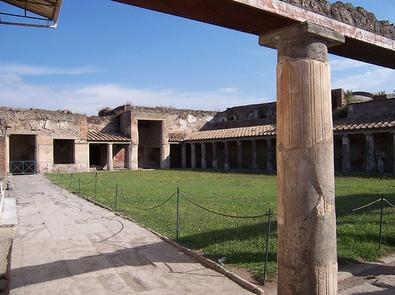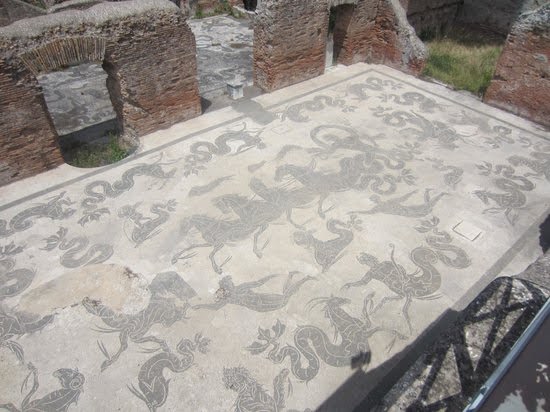baths & water supply
1/9
Earn XP
Description and Tags
Name | Mastery | Learn | Test | Matching | Spaced |
|---|
No study sessions yet.
10 Terms

Stabians Baths
Pompeii, 1st century BC
layout: separate gender sections, paleastra with portico offering shade
construction: concrete and brick with stucco
function: oldest public bath in Pompeii
aqueduct: Aqua Augusta (1st century BC)

Forum Baths
Ostia, 2nd century AD
Layout: sequence of bathing rooms with cool heating system
Construction: Brick-faced concrete and marble column
Decoration: Mosaics depicting Nilotic and oceanic scenes of tritons

Baths of Caracalla
Rome, 211 to 216 AD
Layout: Huge, symmetrical plan
Construction: Concrete vaulting, marble and brick.
Decoration: Marble floors and baths, wall mosaics
Function: built by Emperor Caracalla as a statement of imperial power and to cement his position
Aqueduct: Aqua Marcia (114-140 BC)
Apodyterium
Changing room (where patrons would leave their clothes under the watch of slaves)
Frigidarium
cold room
Tepidarium
warm room
Caldarium
hot room
Sudatorium
sweating room (used to open up the pores and ‘sweat it out’.)
Heliocaminus
Sun room (little heating and large windows, may have been used for sunbathing in warm weather
What was the roman drainage system called?
Cloaca Maxima